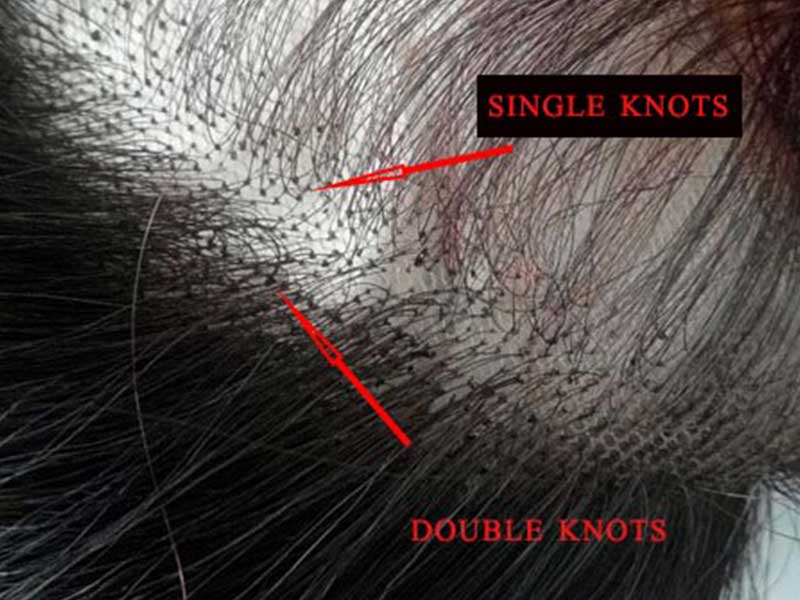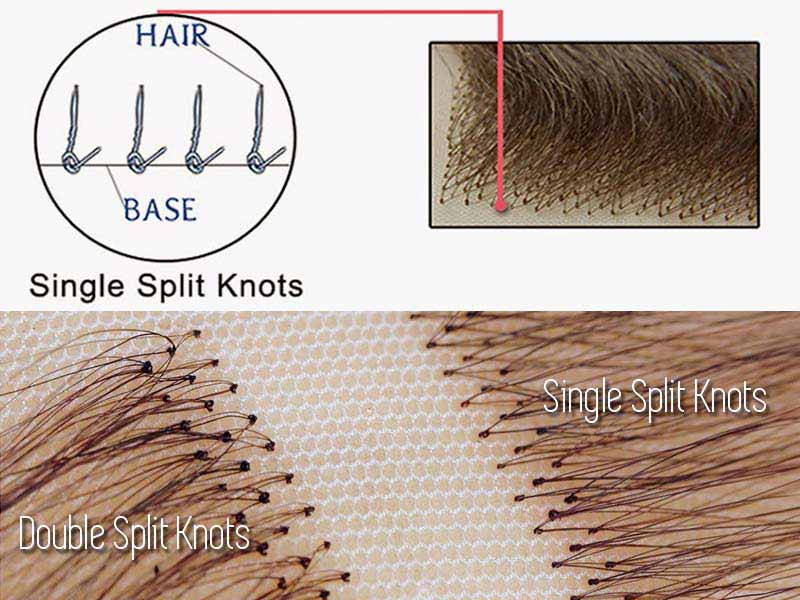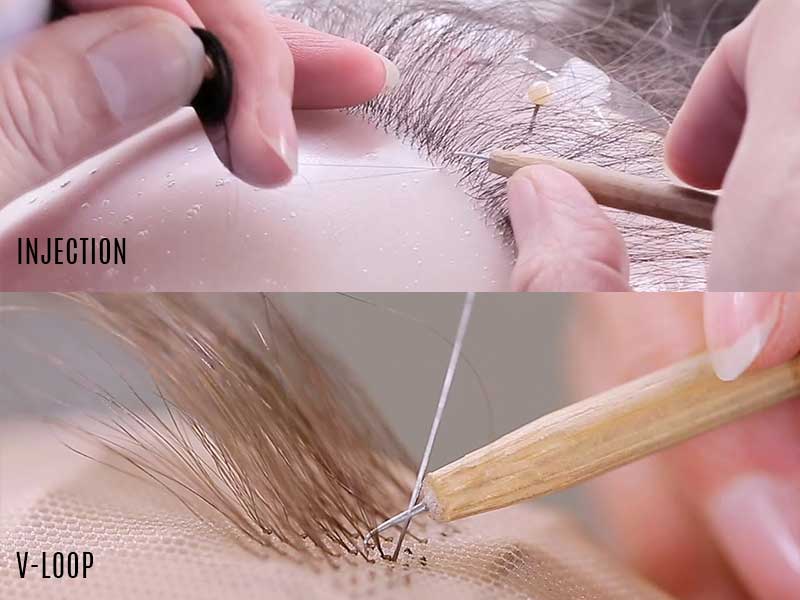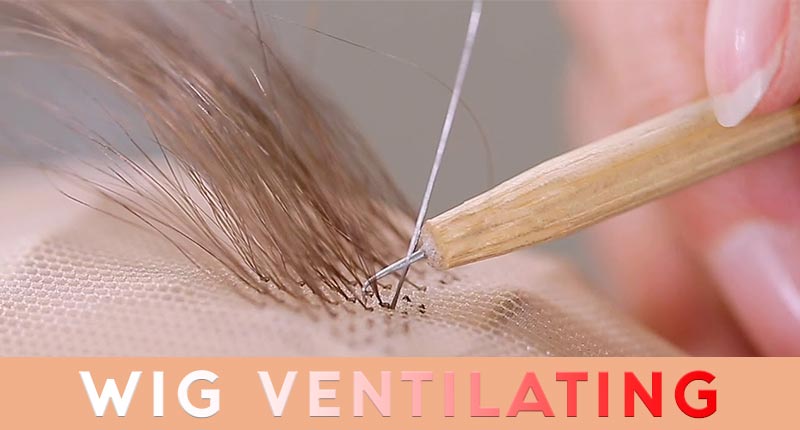You may not be strange with a human hair wig, but you may wonder how hair strands are hooked into the material or wig caps. It’s about wig ventilating. So what is it? What do you need to start ventilating? What are wig ventilating supplies? And more questions.
Our words below may help you find your answers to these questions. Let’s see how skilled craftsmen do to create your desired wigs. Are you ready? Let’s get started!
Table of Contents
What is a ventilating wig?
Ventilation is an important method of hooking the hair strands into a wig cap or a lace material. In hair factories and manufacturers, this step is done by skilled and meticulous workers. Many say that this step takes the most time during the whole process of creating a perfect wig. Wig-makers have to knot or inject hair strands into small holes on the lace foundation. Be patient if you want to learn and master the lace wig ventilating skills.

There are different ventilating techniques, containing hand-knotting, injection, and so on. Before start working, you have to prepare a wig ventilating kit and machine, such as hairs, lace foundation, and a normal ventilating needle for lace wig.
There are more and more hair vendors and manufacturers out there because the hair business is developing now. And some of them also provide ventilating classes and courses to support those who want to be smart in these techniques. Whether you are a newcomer or an experienced one in this field, learning and knowing ventilating lace wig is necessary.
Related posts:
- How To Make A Wig With Lace Closure For Beginners
- How To Make A Wig Yourself?
- This Guideline Will Show You How To Make Your Own Wigs Like A Pro
- How To Make A Full Lace Wig? – Here’s Our Guide
Most popular wig ventilating techniques
Many wigs wearers know that the hair is hooked into a lace cap base, but not all know that these knots are created in different ways and with different tools. Here’re commonly used knots to make your unit desired look.
Hand-knotting
This technique requires makers to do it completely by hand. However, it includes different skills, like a single knot, double knots, single split knot, and double split knots.
The plus point of hand-knotting is that it is suitable for many base materials, such as lace, skin, mono, etc. With ventilating needles wig making, you can pull out hair strands through the base holes to create tight knots. It is the easiest and most suitable one for beginners.
Single knots
As its name suggests, this skill is done with a few hair strands that are tied on the base once. The number of strands is depending on you, maybe 1-2 strands. Craftsmen use wig ventilating tools, especially needles, to knot the hair into the base holes. The single knot makes the hair appear flat and is usually used for hair at the temples and side areas.

Double knots
This is considered the most durable ventilating wig making skills. It is done similarly to the single knot but hair strands are tied twice. That’s why it is more visible and durable than a single knot. Often, wig makers use it to hook the hair in the back areas of the hair system. When you use wig ventilating needles to pull hair strands, try to lay and tie them down close to the lace mesh to create a flat look.
Single split knot
This hair ventilating is often used on lace and skin base. We are sure that ventilating a wig will be easier if you are smart with this skill. Hair strands are hooked in a way that the hair stays half on one side of the hole and the rest half is on the other side. This way is more durable than the single knot. The ventilation offers a natural look, and it is often utilized in the front of hair replacement systems.

Double split knots
For lace and mono foundations, wig makers often use this method. It is more durable and less visible than double knots. People use lace wig ventilating needles to reverse the hair strands twice, but these knots are in different directions. Because the knots are visible, it is not applied in the front of the hairpiece.
Jump to:
- How To Make A Quick Weave Wig? – The 6-Step Guide
- How To Make A Bob Wig – It’s Easy If You Do It Smart!
- Master The Art Of Wigs For Older Women With These 5 Tips
- Can Wigs Blow Off In The Wind? It Won’t, Unless…
Injection technique
To ventilate for skin or silicone base materials, you should use the injected technique. It requires a special hair wig ventilating needle to inject the hair into the base. After ventilate, you have to flip the base and cut off the extra hairs. Hence, it gives a natural look and creates an illusion that the hair is growing directly from the scalp.
This technique has two main types:
– Flat injected knot: Wondering lace wig ventilating how to? People use a special needle to inject the hair into the base at an acute angle. It allows users to part their hairpiece in any direction they want.
– Lift injected knot: Hair strands are injected at a right angle into the material, and you can style the hair easily.

V-loop technique
This is the most common knotting method for skin base wigs. To do it, you have to inject the hair strand down into the skin base and then pass it up again to form a “V” letter. The benefits of the V-loop knot is that it looks natural and quite durable. It is used for the top and crown area of the wig.
In addition to these above-listed techniques, you can consider using other ones, such as crochet knots, under knotting, or latch hook ventilation.
Takeaway
We hope you found what you are looking for in this post. Keep in mind that the ventilation of the wig unit is key; hence, has knowledge about different wig ventilating techniques is necessary.
If you are looking for a wig ventilating school or course to improve your wig-making skill, contact us NOW. We have different courses to help you master the ventilating skill. If you are a newbie in this world, don’t worry, we are here to assort you. Even, if you cannot make a wig yourself, we will design and tailor your special own.
Should you have any questions or need more information, please feel free to visit our website or by leaving comments here. And don’t forget to share it with your relatives to help them know more about the hair world.
Thank you for your follow-up and see you in the next post.


